Are Monarch Butterflies Endangered?
Updated: Feb. 23, 2024
You may have seen reports saying monarch butterflies are endangered. See what experts say about monarch population numbers and how to help.
On This Page
Are Monarch Butterflies in Danger of Extinction?
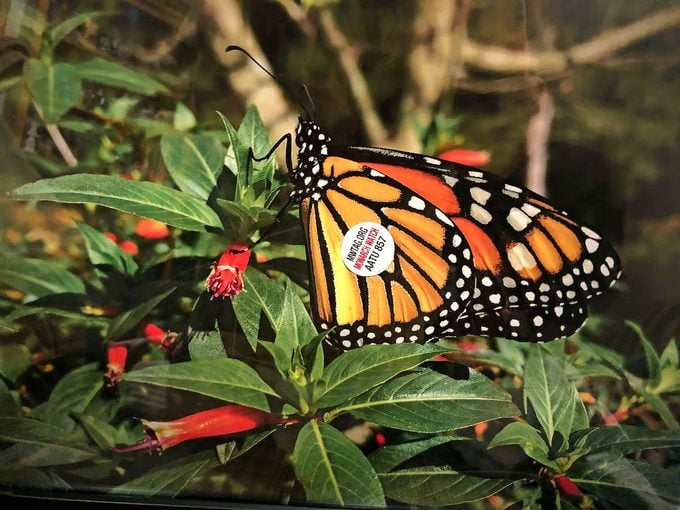
Monarchs are among the most recognizable and best loved butterflies in North America, but you might have noticed fewer of them traveling through your garden over the last few years. Given the less frequent sightings, you might’ve wondered: are monarch butterflies endangered?
The answer is both yes and no. Migratory monarch butterflies entered the International Union of Conservation of Nature‘s Red List of Threatened Species as endangered in 2021. However, in late 2023, the butterfly’s status was reassessed and listed instead as vulnerable. This change in terminology came not from an increase in monarch numbers, but from a shift in the data used to assign classifications.
Monarch Population Numbers Continue to Decline
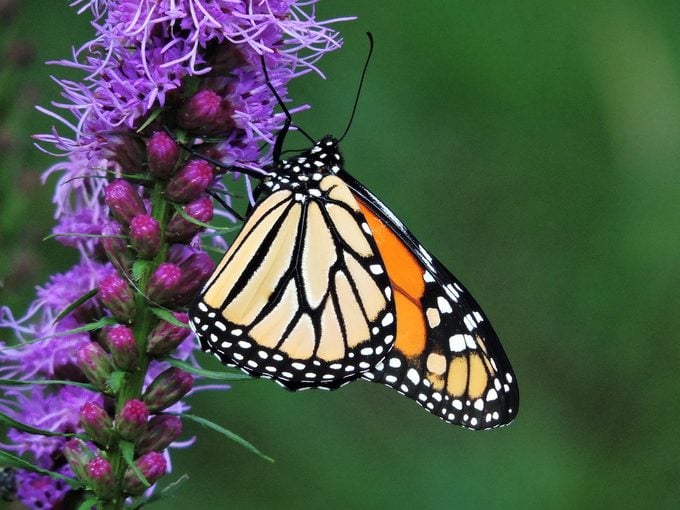
Researchers have split monarchs into two groups at the Rockies: eastern and western. They’re not distinct species, but their migration paths and overwintering habitats differ.
According to the IUCN, the western population is at greatest risk of extinction, having declined by an estimated 99.9%, from as many as 10 million to 1,914 butterflies between the 1980s and 2021.
The larger eastern population also shrunk by 84% from 1996 to 2014. During the 2023-2024 winter season, the eastern monarch population shrunk by 59%, occupying just 2.2 acres from the previous year’s 5.5 acres. According to a report released by World Wildlife Fund, the decreased numbers resulted from droughts in the United States and Mexico, as well as herbicide use.
“The severe drought conditions in the southern U.S. and Mexico suggested the population would likely decrease,” says Wendy Caldwell, Executive Program Director for Monarch Joint Venture. “We expected some kind of decline, but it was a pretty significant drop to the second-lowest population ever.”
Why Are Monarch Numbers Decreasing?
Why are monarch butterfly numbers in such steep decline? Mary Phillips, head of Garden for Wildlife from the National Wildlife Federation, says, “Monarchs are threatened with widespread habitat loss, increased use of pesticides to control insects and weeds, and natural enemies such as predators, parasitoids, and diseases. A changing climate is making some habitat less suitable and forcing changes in migratory patterns.”
Mary further explains that milkweed, the only host plant on which monarchs lay their eggs, used to grow abundantly across the United States. “The best way to help monarchs is restoring their natural habitat by planting native milkweeds and nectar plants, eliminating pesticides and encouraging others to adopt these practices,” she says.
Discover what monarch caterpillars look like, as well as three butterflies that look like monarchs.
Reasons for Monarch Optimism
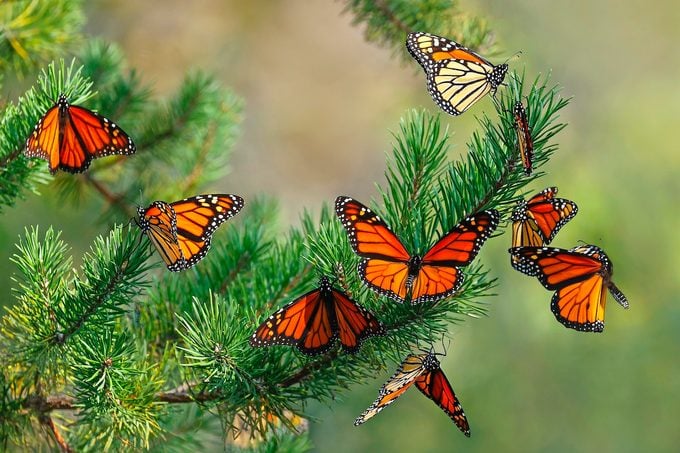
There is still reason to hope for West Coast monarchs. The Xerces Society and other organizations with similar goals are pushing to restore and protect overwintering, breeding and migration habitat throughout the West and into Mexico.
“It is difficult to watch monarch butterflies and their extraordinary migration teeter on the edge of collapse, but there are signs of hope. So many people and organizations have come together to try and protect this butterfly and its habitats. From planting native milkweed and reducing pesticide use to supporting the protection of overwintering sites and contributing to community science, we all have a role to play in making sure this iconic insect makes a full recovery,” said Anna Walker, member of the IUCN SSC Butterfly and Moth Specialist Group and Species Survival Officer at the New Mexico BioPark Society, who led the monarch butterfly assessment.
Do monarch butterfly sightings have meaning?
Grow a Garden for Monarch Butterflies
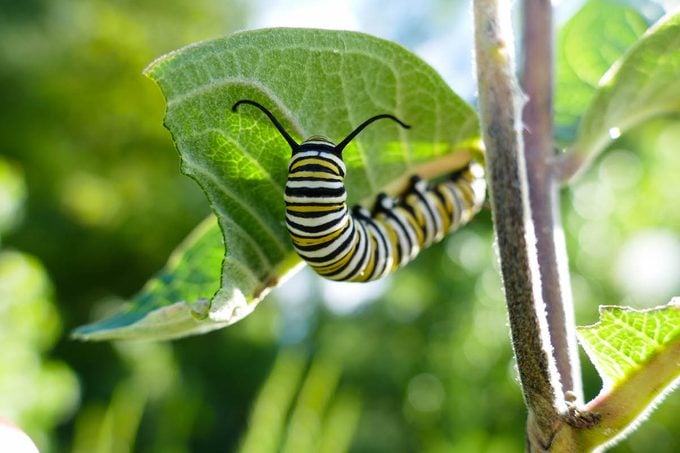
Weather plays a large part in conservation, but there’s plenty gardeners can do to help, too. Planting natives and choosing natural, non-insecticide or herbicide solutions for weeds and pests go a long way in sustaining the beloved monarch.
All monarchs start their lives on milkweed; it’s the only plant on which adults lay their eggs and caterpillars happily munch. Consider planting one of the many native varieties of milkweed in your pollinator garden to get an up-close view of the monarch life cycle. Avoid tropical milkweed, however. It’s a non-native plant, and it can negatively affect monarch migration patterns.
Support adult monarchs on their long journey south by growing nectar-rich flowers that bloom from late summer into fall. Try goldenrod, asters and coreopsis. “Adult monarchs feed on the nectar of many flowers, but they breed only where milkweeds are found,” Mary says.
More Ways to Help Monarchs
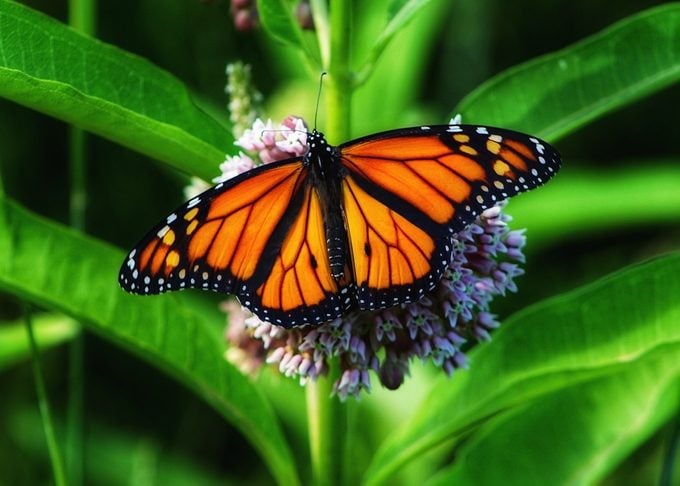
- Encourage local leaders to join the Mayors’ Monarch Pledge.
- Engage in community conservation actions such as native habitat restoration, education and outreach and local policy changes to benefit monarch butterflies.
- Enroll in monarch conservation, community-based science opportunities in local communities.
- Reduce or eliminate the use of pesticides.
- Create an outdoor space using native plants that attract monarchs and other pollinators. Once you’ve incorporated all the elements of a wildlife-friendly habitat—food, water, cover, and places to raise young—be recognized by certifying your space through Garden for Wildlife’s signature Certified Wildlife Habitat program. Every $20 application fee helps further protect and restore key habitat for pollinators and other wildlife. Every certified garden also counts toward meeting the goals of the Million Pollinator Garden Challenge.
- Butterfly Heroes is an initiative that connects gardeners and kids and families alike to help monarch butterflies and other pollinators. By taking a pledge to be a Butterfly Hero, pledgers are committing to create new habitat for monarchs.
- It is not imperative to report every monarch in your garden. However, many gardeners like to keep their own records and track how many monarchs they see from one year to another. For reporting, the Western Monarch Thanksgiving Count is the oldest and best. The Xerces Society has been cataloging the rapid decline of monarchs. It’s important to follow their guidelines and suggestions for the count.
Psst—if you’re interested in raising monarch butterflies, here’s what you need to know.
Additional reporting by Emily Hannemann
About the Experts
Wendy Caldwell is the executive director for Monarch Joint Venture. Having worked to conserve monarch populations for more than a decade, she has helped Monarch Joint Venture partner with nearly 100 organizations to help educate the public about monarchs and the importance of monarch conservation.
Mary Phillips is Head of Native Plant Habitat and Certifications for the World Wildlife Fund. As leader of WWF’s Garden for Wildlife programs, Mary advocates for gardeners to include native plants in their landscapes. She collaborates with conservationists, entomologists, federal agencies and more to make native plants accessible for all.
Anna Walker is the Species Survival Officer for Invertebrate Pollinators at New Mexico BioPark Society. Her work focuses on preserving threatened species of insects, including butterflies, bees, and butterflies.
Sources
- The Xerxes Society for Invertebrate Conservation
- International Union for Conservation of Nature
Why Trust Us
For nearly 30 years, Birds & Blooms, a Trusted Media Brand, has been inspiring readers to have a lifelong love of birding, gardening and nature. We are the #1 bird and garden magazine in North America and a trusted online resource for over 15 million outdoor enthusiasts annually. Our library of thousands of informative articles and how-tos has been written by trusted journalists and fact-checked by bird and garden experts for accuracy. In addition to our staff of experienced gardeners and bird-watchers, we hire individuals who have years of education and hands-on experience with birding, bird feeding, gardening, butterflies, bugs and more. Learn more about Birds & Blooms, our field editor program, and our submission guidelines.




















